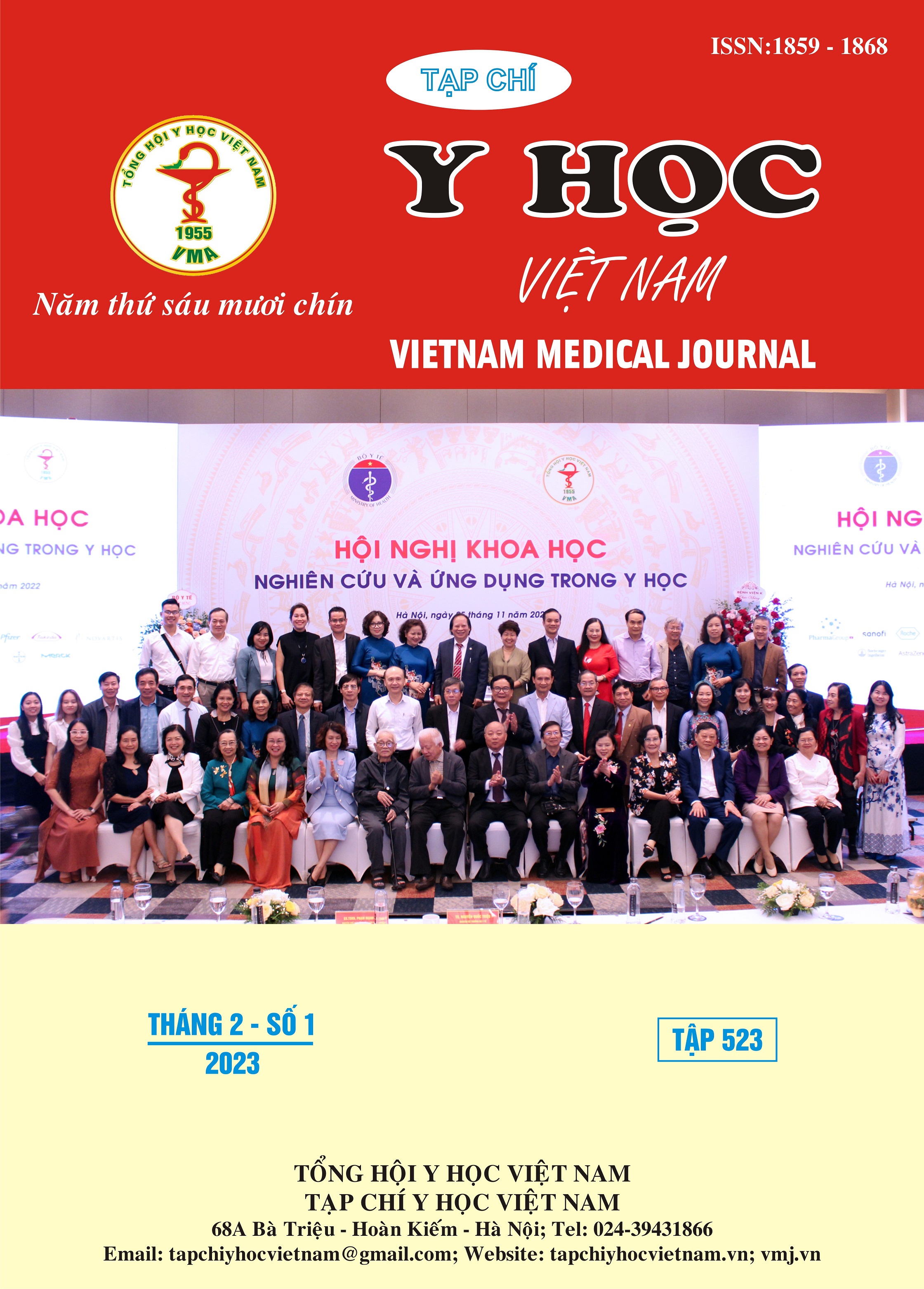TO COMPARE THE PARAMETERS MEASURED BY TISSUE DOPPLER ECHOCARDIOGRAPHY IN PATIENTS BEFORE AND AFTER CARDIAC RESYNCHRONIZATION THERAPY (CRT) IMPLANTATION WITH SEVERAL 2D-ECHOCARDIOGRAPHIC PARAMETERS
Main Article Content
Abstract
Objectives: We compare the parameters measured by tissue Doppler echocardiography in patients before and after cardiac resynchronization therapy (CRT) implantation with several 2D-echocardiographic parameters. Methods: Data were prospectively collected from 33 patients with severe heart failure (left ventricular ejection fraction ≤ 35%), who were indicated for CRT in Vietnam National Heart Institute - Bach Mai Hospital. Echocardiography was performed before and at 3-month follow-up after CRT implantation. Results: The mean age was 60 years old and the early responder’s rates in 3-month follow-up were 30.3% of patients (LVEF increased ≥ 10%). In the group of early responders, mean QRS duration before the procedure and after 3-month follow-up were 133±6.3 ms and 111.5±4.7 ms, respectively. And in the nonresponder group, mean QRS duration before implantation was 134.3±4.1 ms and at 3 month after implantation was 112.0 ±4.2 ms. Patients, who responded early to CRT, had a greater reduction in Vs compared with the nonresponder group (25.3% vs 13.15%). The parameters on tissue Doppler echocardiography: E/A; E/e' decreased, and e'; a'; s' increased in all patients who underwent CRT implantation, and there was no difference between the early responder and nonresponder group (p>0.05). There was no correlation between the parameters derived from tissue Doppler echocardiography and the improvement of LVEF. Conclusions: The early responders’ rates to CRT within the first 3-month follow-up was 30.3%. The parameters derived from tissue Doppler echocardiography included E/A; E/E'; e’; a';s' was improved significantly before and 3 months after CRT implantation. However, there was no difference between the early responder and nonresponder group.
Article Details
Keywords
Echocardiography, heart failure, myocardial resynchronization
References
2. UK, Nawwar Al-Attar, et al. "2016 ESC Guidelines for the diagnosis and treatment of acute and chronic heart failure." Eur. Heart J. 37 (2016): 2129-2200.
3. Tomassoni, G. E. R. Y. "How to define cardiac resynchronization therapy response." J Innov Card Rhythm Manag 7 (2016): S1-7.
4. Nakai, Toshiko, et al. "What are the expectations for cardiac resynchronization therapy? A validation of two response definitions." Journal of Clinical Medicine 10.3 (2021): 514.
5. Chung, Eugene S., et al. "Results of the Predictors of Response to CRT (PROSPECT) trial." Circulation 117.20 (2008): 2608-2616.
6. Galli, E., et al. "Prognostic utility of the assessment of diastolic function in patients undergoing cardiac resynchronization therapy." International Journal of Cardiology 331 (2021): 144-151.
7. Waggoner, Alan D., Lisa De Las Fuentes, and Victor G. Davila‐Roman. "Doppler echocardiographic methods for optimization of the atrioventricular delay during cardiac resynchronization therapy." Echocardiography 25.9 (2008): 1047-1055.


